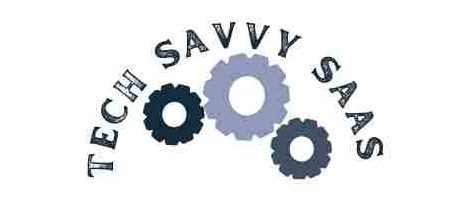Personalized learning platforms stand out as innovative tools designed to cater to the unique needs and learning preferences of individual students. Unlike traditional one-size-fits-all approaches, personalized learning platforms offer tailored instruction that adapts to each learner’s pace, interests, and abilities.
Adapting instruction to accommodate diverse learning styles and preferences is crucial for ensuring that all students have the opportunity to succeed. No two students are alike, and what works well for one may not be effective for another. By embracing personalized learning platforms, educators can better address the individual characteristics and learning processes of each student, fostering a more inclusive and supportive learning environment.
Moreover, the role of technology in education has grown significantly in recent years, serving as a powerful enabler of personalized learning experiences. With the advent of artificial intelligence and advanced data analytics, personalized learning platforms can analyze student performance, preferences, and prior knowledge to deliver customized learning paths tailored to each learner’s needs.
The primary objective of this blog post is to delve into the features, benefits, and effectiveness of personalized learning platforms in meeting the needs of students. By exploring real-life examples, research findings, and practical insights, we aim to provide educators, administrators, and policymakers with valuable information to inform their decisions and practices in the realm of personalized education. Join us as we uncover the transformative potential of personalized learning platforms in shaping the future of education.

Personalized learning
Personalized learning is a pedagogical approach that tailors instruction to meet the individual needs, interests, and abilities of each learner. At its core, personalized learning recognizes that every student is unique and learns in different ways, requiring flexible and adaptable teaching methods.
The shift from traditional, one-size-fits-all instruction to personalized approaches represents a significant evolution in education. In the past, classrooms often relied on uniform lesson plans and teaching strategies that failed to account for the diverse needs of students. However, as educators increasingly recognize the limitations of this approach, there has been a growing emphasis on personalized learning to better meet the needs of all learners.
Technology plays a pivotal role in enabling personalized learning experiences for students. With the advent of digital tools and platforms, educators can leverage technology to deliver tailored instruction, provide immediate feedback, and track student progress more effectively. By harnessing artificial intelligence, data analytics, and adaptive learning algorithms, personalized learning platforms can analyze vast amounts of student data to create customized learning paths that address each student’s strengths, weaknesses, and learning preferences.
Several examples of personalized learning platforms have gained prominence in the educational landscape. Khan Academy, for instance, offers a wide range of interactive exercises, instructional videos, and personalized learning dashboards to help students learn at their own pace. Similarly, Duolingo provides personalized language learning experiences through adaptive algorithms that adjust difficulty levels based on individual performance. Additionally, Coursera offers online courses from universities and institutions worldwide, allowing learners to customize their learning experiences based on their interests and goals.
Benefits of Personalized Learning Platforms
Personalized learning platforms offer a plethora of advantages for students, educators, and schools alike, revolutionizing the way education is delivered and experienced.
Advantages for Students, Educators, and Schools
One of the primary benefits of personalized learning platforms is their ability to promote student engagement and motivation. By providing tailored content and activities that align with students’ interests and learning preferences, these platforms can captivate learners’ attention and foster a deeper sense of involvement in the learning process. When students are actively engaged and motivated, they are more likely to invest time and effort into their studies, leading to greater academic success.
Personalized learning platforms empower students to take ownership of their learning journey. By allowing students to set their own learning goals, track their progress, and make decisions about their educational path, these platforms promote a sense of autonomy and responsibility. As students become active participants in shaping their learning experiences, they develop crucial self-regulation skills and a growth mindset that are essential for lifelong learning.
Catering to Individual Student Needs
One of the most significant advantages of personalized learning platforms is their ability to cater to the individual needs of students. Whether students require additional support in certain areas or seek more challenging material to advance their learning, personalized platforms can adapt to accommodate a diverse range of learning styles, paces, and abilities. By tailoring instruction to meet each student’s unique needs, these platforms create personalized learning pathways that optimize learning outcomes and foster academic success.
Improved Academic Outcomes
Research has consistently shown that personalized learning platforms can lead to improved academic outcomes for students. By providing targeted instruction, personalized feedback, and opportunities for mastery learning, these platforms help students achieve deeper levels of understanding and proficiency in their studies. Additionally, personalized learning approaches have been associated with increased retention rates, higher test scores, and greater overall academic achievement.
Features of Effective Personalized Learning Platforms
Effective personalized learning platforms possess key features and characteristics that enable them to adapt to the diverse needs and preferences of individual learners, fostering engaging and impactful learning experiences.
Adaptive algorithms, data analytics, and artificial intelligence are fundamental components of effective personalized learning platforms. These technologies analyze vast amounts of student data, including performance metrics, learning preferences, and mastery levels, to dynamically adjust content and instruction in real-time. By leveraging adaptive algorithms, personalized learning platforms can tailor learning paths to match each student’s unique strengths, weaknesses, and learning styles, maximizing learning outcomes and engagement.
Feedback Mechanisms, Progress Tracking, and Assessment Tools
Another crucial aspect of effective personalized learning platforms is the presence of robust feedback mechanisms, progress tracking, and assessment tools. These features provide students with timely and actionable feedback on their performance, allowing them to monitor their progress, identify areas for improvement, and track their mastery of learning objectives. Additionally, feedback mechanisms enable educators to gain insights into student learning trajectories and intervene when necessary to provide additional support or enrichment.
Innovative Features
Leading personalized learning platforms often incorporate innovative features that enhance the learning experience and facilitate personalized instruction. For example, some platforms offer adaptive learning paths that dynamically adjust content based on student responses and performance, ensuring that each learner receives targeted instruction aligned with their individual needs. Other platforms utilize scaffolding techniques to provide support and guidance as students work through challenging concepts, gradually fading assistance as their understanding improves.
Furthermore, many personalized learning platforms leverage gamification elements, such as badges, rewards, and progress meters, to motivate and incentivize student learning. By gamifying the learning process, these platforms create a more engaging and immersive educational experience, encouraging students to actively participate and persist in their studies.
Implementing personalized learning platforms in education
Implementing personalized learning platforms in educational settings requires careful planning, strategic considerations, and a commitment to meeting the diverse needs of all learners.
Successful implementation of personalized learning platforms begins with strategic planning and collaborative decision-making. Educators and administrators should work together to define clear goals and objectives for personalized learning initiatives, ensuring alignment with the broader educational mission and vision.
Additionally, it is essential to provide professional development and training opportunities for educators to familiarize them with the features and functionalities of personalized learning platforms. Training sessions should focus on effective instructional strategies, data interpretation, and best practices for integrating technology into the classroom.
Addressing Challenges and Considerations
While personalized learning platforms offer numerous benefits, they also present challenges and considerations that must be addressed. Accessibility, equity, and privacy concerns are among the most significant considerations. Educators must ensure that all students have equal access to technology and personalized learning resources, regardless of their socioeconomic status or background. Moreover, educators must prioritize student privacy and data security, implementing robust safeguards to protect sensitive information.
Tips for educators
Educators can maximize the effectiveness of personalized learning platforms by following these tips:
- Selecting the Right Platform: Choose a personalized learning platform that aligns with the unique needs and objectives of your students and curriculum.
- Integrating Technology Thoughtfully: Integrate personalized learning platforms seamlessly into existing instructional practices, ensuring that technology enhances, rather than detracts from, the learning experience.
- Differentiating Instruction: Use the flexibility of personalized learning platforms to differentiate instruction and meet the diverse needs of individual students.
- Providing Ongoing Support: Offer ongoing support and guidance to students as they navigate personalized learning platforms, providing assistance and feedback as needed.
- Monitoring Progress: Utilize the data and analytics provided by personalized learning platforms to monitor student progress, identify areas for improvement, and inform instructional decision-making.
Success stories and best practices
Several schools and districts have successfully embraced personalized learning initiatives, yielding positive outcomes for students and educators alike. For example, the school district implemented a personalized learning platform that resulted in increased student engagement, improved academic achievement, and a greater sense of ownership of learning. By sharing success stories and best practices, educators can learn from the experiences of their peers and gain insights into effective strategies for implementing personalized learning platforms in their own classrooms and schools.
How do personalized learning platforms adapt to individual student needs?
Personalized learning platforms leverage adaptive algorithms, data analytics, and artificial intelligence to tailor content and instruction to the unique needs of each student. These platforms collect and analyze data on student performance, preferences, and learning styles, allowing them to create personalized learning pathways that match individual strengths, weaknesses, and interests. Through continuous assessment and feedback, personalized learning platforms adjust instructional materials, pacing, and difficulty levels to optimize learning outcomes for every learner.
What role do teachers play in a personalized learning environment?
In a personalized learning environment, teachers serve as facilitators and guides, providing support, feedback, and scaffolding to students as they navigate their learning journeys. Rather than delivering uniform instruction to the entire class, teachers tailor their approach to meet the individual needs of each student, offering targeted interventions and enrichment opportunities as needed. Teachers also play a crucial role in curriculum design, assessment, and data analysis, using insights from personalized learning platforms to inform instructional decision-making and differentiate instruction effectively.
Are personalized learning platforms suitable for all students, including those with special needs?
Yes, personalized learning platforms can be adapted and customized to meet the needs of students with diverse learning profiles, including those with special needs. These platforms offer flexibility and scalability, allowing educators to tailor instruction and support services to accommodate individual learning styles, abilities, and preferences. By providing personalized accommodations, adaptations, and assistive technologies, personalized learning platforms can help students with special needs access and engage with curriculum content in meaningful ways, promoting inclusive educational environments.
How do personalized learning platforms protect student data and privacy?
Personalized learning platforms prioritize student data privacy and security through robust safeguards and compliance with relevant laws and regulations, such as the Family Educational Rights and Privacy Act (FERPA). These platforms implement encryption, access controls, and data anonymization techniques to safeguard sensitive student information from unauthorized access or disclosure. Additionally, personalized learning platforms often provide transparent privacy policies and consent mechanisms to inform students, parents, and educators about how student data is collected, used, and protected.
What evidence exists to support the effectiveness of personalized learning platforms?
Numerous studies and research findings provide evidence of the effectiveness of personalized learning platforms in improving student outcomes and learning experiences. Research suggests that personalized learning approaches can lead to increased student engagement, academic achievement, and retention rates, as well as greater motivation and ownership of learning. Additionally, personalized learning platforms have been associated with reduced achievement gaps and improved outcomes for students with diverse backgrounds and learning needs. By synthesizing insights from educational psychology, learning sciences, and pedagogical research, personalized learning platforms offer evidence-based strategies for promoting student success in the digital age.
Conclusion
In conclusion, personalized learning platforms represent a transformative approach to education, offering tailored instruction that adapts to the unique needs and preferences of individual learners. Throughout this blog post, we have explored the features, benefits, and effectiveness of personalized learning platforms in meeting the diverse needs of students.
By leveraging adaptive algorithms, data analytics, and artificial intelligence, personalized learning platforms empower educators to deliver customized instruction that maximizes student engagement, motivation, and academic outcomes. These platforms offer flexible learning pathways, robust feedback mechanisms, and innovative features that promote student success and ownership of learning.
Moreover, personalized learning platforms have the potential to revolutionize education by harnessing the power of technology to create personalized learning experiences that cater to the individual needs of every learner. As technology continues to evolve, personalized learning platforms offer educators and administrators invaluable tools to enhance teaching and learning in the digital age.
As we look to the future of education, it is essential to encourage further exploration and implementation of personalized learning platforms in educational settings. By embracing personalized learning approaches, educators can create inclusive, equitable, and student-centered learning environments that empower all learners to reach their full potential.
References:
- Johnson, L., Adams Becker, S., Estrada Vidal, A., & Freeman, A. (2020). The NMC Horizon Report: 2020 Higher Education Edition. EDUCAUSE.
- Pane, J. F., Steiner, E. D., Baird, M. D., & Hamilton, L. S. (2015). Continued Progress: Promising Evidence on Personalized Learning. RAND Corporation.
- U.S. Department of Education. (2017). National Education Technology Plan 2017. Office of Educational Technology.
- Allensworth, E., & Healey, K. (2020). Is personalized learning improving high school students’ academic outcomes? The RAND Corporation.
- Vygotsky, L. S. (1978). Mind in Society: The Development of Higher Psychological Processes. Harvard University Press
More Post
- How do implement 1:1 device programs in schools?
- Can We Unravel the Secrets of the Dark Web? Understanding Cybercrime Hideouts and Their Impact
- How do you protect your personal Online?
- What is IoT cybersecurity? Cybersecurity for Internet of Things (IoT) Devices
- What is social engineering in cyber security ? The role of social engineering in cybersecurity and its impact






